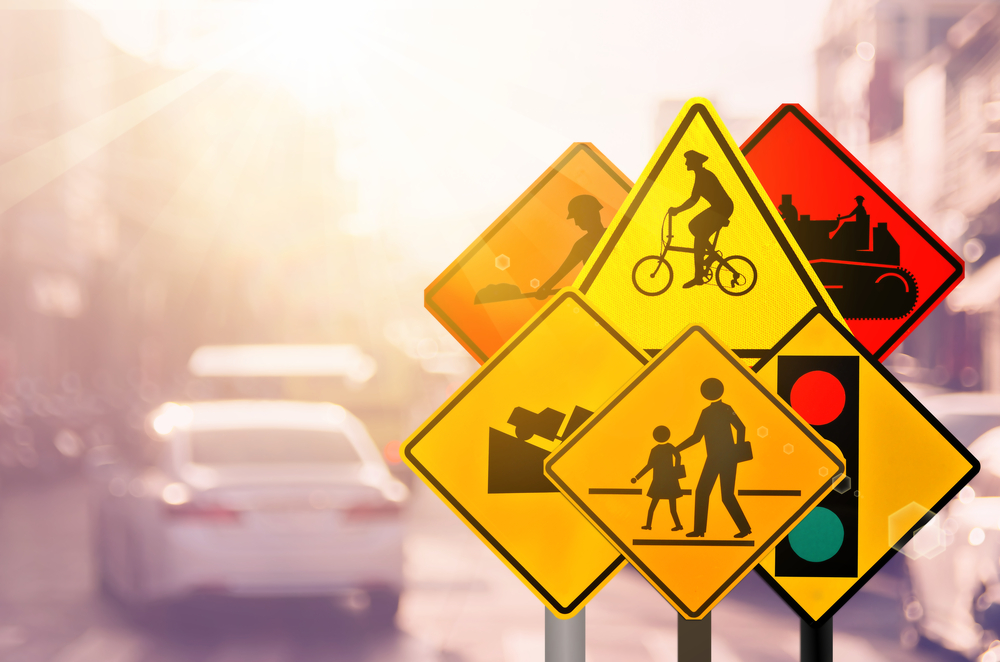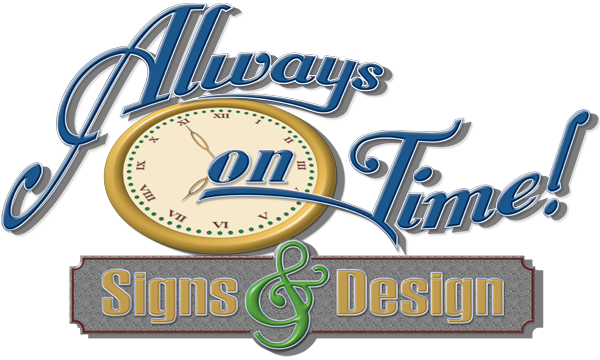
All road signs are important, but with so many different ones on the road, it can be hard to distinguish which ones are the most important to pay attention to. With that in mind, let’s break down the top five essential signs and why they are valuable to drivers and pedestrians.
A Brief Rundown of the Importance of Road Signs
Sometimes, it’s easy to gloss over different road signs when driving because they’re so common. However, these signs serve some pretty crucial purposes, such as:
Notify Drivers
It’s impossible to know the rules of the road everywhere you go, particularly when you’re in a new area. Road signs can tell drivers where they can go, how fast they can go, and which areas are prohibited. These signs can also give crucial directions for public services, such as rest stops, hospitals, and on-ramps.
The great thing is that all road signs in the United States are standardized. They are all based on the Manual on Uniform Traffic Control Devices (MUTCD). This means that a driver can still read and understand a sign no matter what state or county they’re in.
Maintain Safe Speeds
Although speed limits have been used since the early days of driving, the national standard system wasn’t implemented until the 1970s. Before then, it was up to each state to determine its speed limits, so there were massive discrepancies from one state to the next.
The standardized system lets drivers know what to expect from speed limits on various roads. Adhering to these limits helps everyone stay safer, particularly in school zones and other crowded areas.
Protect Drivers and Pedestrians
Overall, the primary purpose of road signs is to maintain safety for everyone who may be on the road at a given time. Not only do drivers benefit from avoiding collisions, but pedestrians can feel safer crossing and sharing the road. So, when evaluating the “most important” road signs, focusing on safety is imperative.
While informative signs are valuable, they are not crucial for reducing accidents and collisions. Also, they don’t inform drivers of local regulations that could make their driving safer and more efficient.
Which Road Signs are the Most Important?
There are five primary road signs that we feel are the most important. Here’s a breakdown of each sign, its meaning, and why it’s on this list.
Stop Sign
Basics: A stop sign is an octagonal sign with a red background and white lettering. This sign is one of the most common options, as it’s placed at virtually every intersection in the country. Stop signs are instantly recognizable and easily visible in virtually all weather and visibility conditions.
Why It’s Important: Without stop signs, there would likely be far more collisions in the United States daily. These signs are important because they force drivers to stop and observe their surroundings. Because these signs are placed at intersections (where cars and pedestrians have a high chance of colliding), they’re extremely valuable.
Speed Limit Sign
Basics: A speed limit sign is a vertical rectangle with a white background and black lettering. Sometimes, speed limit signs may use a digital number board. This type of changeable board is used to adapt the current maximum speed according to traffic patterns. For example, during peak traffic, the speed limit may be lowered to help ease congestion.
Why It’s Important: Speed limit signs are important because they show drivers the maximum safe speed they can travel on a given road. As a rule, 25 MPH is safe for residential areas, 45 MPH is ideal for highways and main thoroughfares, and 65 or 70 MPH is suitable for a freeway. Different areas may have unique speed limits as well.
Speed limits are also helpful for alleviating traffic congestion. Moving more cars within a specific area is easier by forcing drivers to slow down. Temporary or adjustable signs are also valuable for construction zones so drivers can pay closer attention to their surroundings.
Yield Sign
Basics: The yield sign is an upside-down triangle with a red border, a white center, and red lettering in the middle. The yield sign was a yellow diamond with black lettering, which was phased out in the 1970s. Yield signs are placed in areas where cars need to merge but not necessarily stop. One perfect example is on freeways on and off-ramps, where cars must merge with existing traffic to maintain the flow of vehicles.
Why It’s Important: A yield sign is almost as important as a stop sign because it warns drivers to pay attention to other cars on the road. Also, a yield sign notifies drivers that they don’t have the right of way and must adjust their position according to other vehicles. Without these signs, drivers may assume they have the right of way, or they may not pay attention and cause a collision.
Pedestrian Crossing Sign
Basics: A pedestrian crossing sign is often a yellow diamond with black icons. However, sometimes (usually in school zones), the shape of the sign may be a pentagon. Typically, the sign only has a black icon of a person walking, but it may also have the words “Pedestrian” or “Pedestrian Crossing.” This sign is usually placed in an area where a crosswalk exists without a traffic light to get cars to stop. This way, drivers know to anticipate pedestrians when driving past.
Why It’s Important: Pedestrian collisions are far more severe and deadly than those involving two vehicles. Pedestrian Crossing signs allow individuals to cross safely without as much risk of getting hit by an oncoming car. These signs are crucial in school zones where children and parents may cross often during school hours.
No Turn/Turn Only Signs
Basics: No Turn/Turn Only signs notify drivers of which way they are allowed (or prohibited) to turn. One example would be a Right Turn Only sign, meaning anyone in the lane must turn right and cannot continue straight on. Another common example is a No U-Turn sign, which tells drivers they cannot make a U-turn at the intersection.
Why They’re Important: Collisions can often happen when drivers turn because they can’t always see everything in front of them. Also, in some areas, there may be one-way streets, meaning that a wrong turn could put a car facing oncoming traffic. These signs are necessary to tell drivers where they can and can’t go so they don’t create hazardous road conditions.
Get the Best Road Signs from WorkSafe Traffic Control Industries
WorkSafe Traffic Control Industries is dedicated to providing the best road signage possible. We adhere to all MUTCD standards and often have a seven-day turnaround for all orders. No matter what kind of road signs you need, we’ll deliver the best options for your city or municipality. Contact us today to find out more and place an order!

